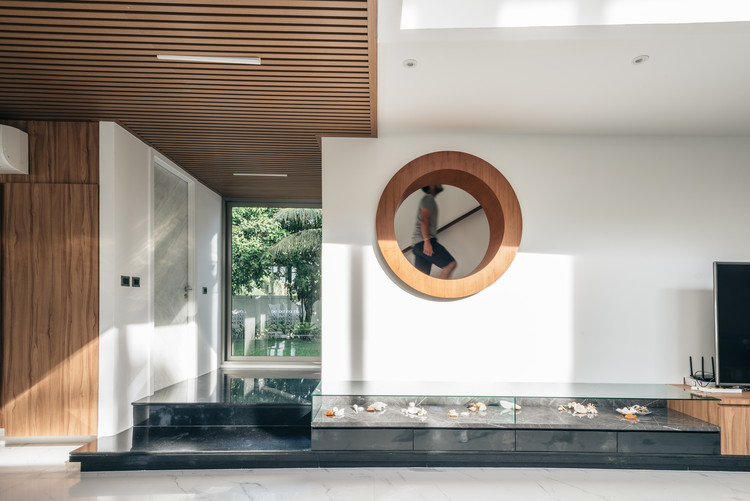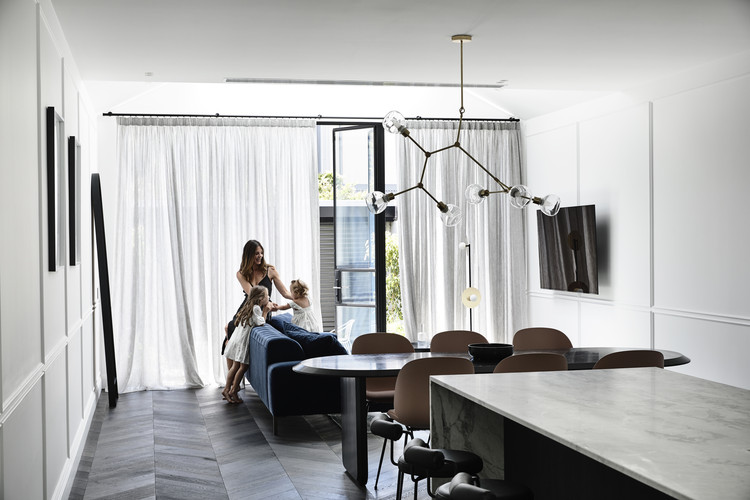Cistercian Monastery of St. María de Armenteira rodríguez + pintos arquitectos
2019-01-02 02:00
架构师提供的文本描述。St.María de Armenteira的西斯特西恩修道院位于蒙特卡斯特罗夫的西边山坡上,这是一条支路,将Salnés山谷与Ría de Pontevedra隔开。它的起源可以追溯到中世纪早期,可能是前罗马时期。
Text description provided by the architects. The Cistercian monastery of St. María de Armenteira is located on the western hillside of Monte Castrove, a spur that separates the Salnés valley from the Ría de Pontevedra. Its origin goes back to the Early Middle Ages, probably the pre-Romanesque period.
Text description provided by the architects. The Cistercian monastery of St. María de Armenteira is located on the western hillside of Monte Castrove, a spur that separates the Salnés valley from the Ría de Pontevedra. Its origin goes back to the Early Middle Ages, probably the pre-Romanesque period.
修道院与西士提人原型完美地相遇:一个难以进入的原始山谷,四周是山脉,一股水流,远离人口密集的地区。它的教堂位于合唱的北面,是原始修道院唯一的遗迹。
The monastery The monastery meets perfectly the Cistercian archetype: a virgin valley with difficult access surrounded by mountains, a stream of water and far away from populated areas. Its church, on the north side of the ensemble, is the only remain of the original monastery.
The monastery The monastery meets perfectly the Cistercian archetype: a virgin valley with difficult access surrounded by mountains, a stream of water and far away from populated areas. Its church, on the north side of the ensemble, is the only remain of the original monastery.
这座建筑始于1167年,于十二世纪末或十三世纪初完工。修道院的其余部分保持着由房间包围的中央修道院的原始组织,但这一建筑大多是围绕着十六世纪和十八世纪建造的。
The construction began in 1167 and it was finished towards the end of the XII century or the beginning of the XIII. The rest of the monastery maintains the primitive organization of a central cloister surrounded by rooms, but this construction was mostly built around the XVI and XVIII centuries.
The construction began in 1167 and it was finished towards the end of the XII century or the beginning of the XIII. The rest of the monastery maintains the primitive organization of a central cloister surrounded by rooms, but this construction was mostly built around the XVI and XVIII centuries.
十九世纪的西士多修女们,这一过程给修道院带来了掠夺和毁灭,直到1963年,阿米戈斯·德尔蒙纳特里奥·德阿门蒂拉协会才成立。该协会所进行的建筑意味着保存寺院中为数不多的宝贵遗迹,特别是修道院和厨房,但它也导致建筑物其他部分的消失,例如过去一直延伸到整个建筑群南部的新手的古老侧翼。自1989年以来,一群来自阿洛兹(纳瓦拉)的西士多修女住在寺院的空间里。如今,这个教会已经独立了。为了提供经济支持,西士古修女们已开始生产手工制作的肥皂、有机洗剂和香水,并拥有自己的专利和生产,这一活动需要一个新的车间以及接收、储存和运输这些材料的补充任务。
Cistercian nuns During the XIX Century, the disentailment process that took place brought despoilment and ruin to the monastery until 1963, when the Amigos del Monasterio de Armenteira Association was created. The construction undertaken by the Association meant the preservation of the few remaining valuable ruins in the monastery, especially the cloisters and kitchens, but it also caused the disappearance of other parts of the building such as the ancient wing of the novices that used to reach the whole south part of the ensemble. Since 1989, a group of Cistercian nuns from Alloz (Navarra) live in the monastic spaces. Nowadays, this congregation has become independent. For their economic support, the Cistercian nuns have started manufacturing handcrafted soap, organic lotions and perfumes with an own patent and production, an activity that required a new workshop as well as the complementary tasks of receiving, storing and shipping the materials.
Cistercian nuns During the XIX Century, the disentailment process that took place brought despoilment and ruin to the monastery until 1963, when the Amigos del Monasterio de Armenteira Association was created. The construction undertaken by the Association meant the preservation of the few remaining valuable ruins in the monastery, especially the cloisters and kitchens, but it also caused the disappearance of other parts of the building such as the ancient wing of the novices that used to reach the whole south part of the ensemble. Since 1989, a group of Cistercian nuns from Alloz (Navarra) live in the monastic spaces. Nowadays, this congregation has become independent. For their economic support, the Cistercian nuns have started manufacturing handcrafted soap, organic lotions and perfumes with an own patent and production, an activity that required a new workshop as well as the complementary tasks of receiving, storing and shipping the materials.
新建筑的车间位于寺院合奏的南部,因为它易于进入、隐私和有利的方向,也因为该地区的地形使得整个项目可以在现有的斜坡下进行。人们正在寻找新兵的古老翅膀的历史遗迹。它的设计,通过考古发掘,再次出现在强有力的花岗岩墙,确定了新建筑的周长。
The workshop The new building is located on the south part of the monastic ensemble because of the easy access, privacy, and advantageous direction and also because the topography of the area allows the whole program to be held under the existent slope. The recovery of the historic trace of the ancient wing of the novices is being sought. Its design, shown by the archaeological excavations, emerges again through powerful granite walls that define the perimeter of the new construction.
The workshop The new building is located on the south part of the monastic ensemble because of the easy access, privacy, and advantageous direction and also because the topography of the area allows the whole program to be held under the existent slope. The recovery of the historic trace of the ancient wing of the novices is being sought. Its design, shown by the archaeological excavations, emerges again through powerful granite walls that define the perimeter of the new construction.
车间的轻工业和模块化结构在这些墙壁中获得了自己的维度,在其目的上寻找最灵活的空间;上层花园、过渡和结合元素以及旧的寺院空间具有重要的相关性。所有概述的干预措施都考虑到了其未来和完全可逆性的可能性。
The workshop’s light industrial and modular structure acquires its own dimension within these walls looking for the most flexibility in its purpose; the upper garden and the transition and union elements along with the old monastic spaces acquire an essential relevance. All the outlined interventions have taken into account the possibility of its future and complete reversibility.
The workshop’s light industrial and modular structure acquires its own dimension within these walls looking for the most flexibility in its purpose; the upper garden and the transition and union elements along with the old monastic spaces acquire an essential relevance. All the outlined interventions have taken into account the possibility of its future and complete reversibility.
Architects rodríguez + pintos arquitectos
Location Lugar de la Iglesia, s/n, 36192 Armenteria, Pontevedra, Spain
Author Architects Jaime Rodríguez Abilleira, Santiago Pintos Pena
Photographs Hector Santos-Díez
 举报
举报
别默默的看了,快登录帮我评论一下吧!:)
注册
登录
更多评论
相关文章
-

描边风设计中,最容易犯的8种问题分析
2018年走过了四分之一,LOGO设计趋势也清晰了LOGO设计
-

描边风设计中,最容易犯的8种问题分析
2018年走过了四分之一,LOGO设计趋势也清晰了LOGO设计
-

描边风设计中,最容易犯的8种问题分析
2018年走过了四分之一,LOGO设计趋势也清晰了LOGO设计

































































